- Home
- Michael Thomas Ford
Jane Fairfax 3 - Jane Vows Vengeance Page 17
Jane Fairfax 3 - Jane Vows Vengeance Read online
Page 17
“I understand that there’s a chapel in the house. That’s where the stained-glass window is, correct?”
“I don’t know that I would call it a chapel,” said Ninon. “A sanctuary, perhaps.”
Jane was confused. “I don’t understand,” she said.
“Eloise Babineaux was a very superstitious woman,” Ninon said. “She believed in all kinds of things—ghosts, werewolves, vampires. She thought that one of her suitors was a vampire. His name was Edward St. John. He was English, a secretary to the ambassador, the Earl Granville.”
“Granville Leveson-Gower,” Jane said. “Of course. I knew hi—”
Lucy coughed.
“I remember him from history class,” Jane concluded.
Not only had she known the Earl Granville, she had known Edward St. John as well. He had been a vampire, and a rather nasty one at that. If Eloise Babineaux had been mixed up with him, she probably did have reason to be afraid.
“Eloise heard about this needle,” said Ninon. “I don’t know where. She had the window made and placed in a room at the top of the house, thinking it would protect her. She slept in there every night.”
“Apparently it worked,” said Lucy. “I mean, she was never turned into a vampire, right?”
“She died of consumption,” Ninon replied. “Everybody did back then. It was very romantic, apart from the spitting up of blood.”
It was, Jane felt, time to get to the point. “Do you know if Eloise ever actually found the Needle?” she asked.
Ninon looked at her quizzically. “You think it exists?” she said.
“I don’t know,” Jane answered. “We think perhaps it might.”
“Would it be very valuable?” asked Ninon.
“That’s difficult to say,” Jane said. “Some people believe it was made from the nails used to crucify Christ.”
Ninon snorted. “Another fairy tale,” she said.
“Yes,” said Jane. “Well, to answer your question, Crispin’s Needle might indeed be very valuable.”
“If it exists,” Lucy added.
“If it exists,” Jane agreed.
“And what makes you think it might be here in the house?” Ninon asked.
Jane hesitated. “Just the window,” she said, knowing that any other explanation would sound insane. “As you know, it’s the same as the one in the Church of St. Apollonia.”
“Well, you’re certainly welcome to look for yourself,” Ninon said. “But understand that if you do find anything, it belongs to me.”
This thought had not occurred to Jane. Now that it had, she saw that there might be a problem. If Crispin’s Needle indeed was in the house, Jane wanted it for her own use. But of course Ninon would have a claim on it.
I might have to bite her, she thought. That would be most inconvenient.
Ninon rose from the chair. “Follow me,” she said.
They walked up two more flights of stairs, until they came to the top floor. Here the house was far less elegant, with plain wood floors and faded wallpaper patterned with shepherdesses. Ninon walked to the end of the hall and opened a door.
The room behind it was small, perhaps nine feet on any side. It was painted white, and there were no rugs on the floor. A narrow iron-framed bed was pushed against one wall. The only other furniture was an old wooden traveling trunk at the foot of the bed. It was banded in brass and secured with leather straps. The room’s lone window had been replaced by a stained-glass panel. Like the one in the church at Cripple Minton, it depicted a red heart being pierced by a long needle.
“Have you looked inside that?” Jane asked Ninon, indicating the trunk.
“Of course,” Ninon replied. “It was filled only with old nightgowns. Now it is empty.”
“There could be a false bottom,” Lucy suggested.
“Look for yourself,” said Ninon.
Lucy knelt and undid the buckles on the straps. She lifted the lid and peered inside. Then she put her hand in and tapped on the trunk’s bottom. She shook her head at Jane. “That’s it,” she said.
“And you didn’t need the key to open it,” Jane said.
“Key?” said Ninon. “You have a key?”
I might as well show her, Jane thought. She pulled the key out of her pocket and held it up.
Ninon took the key from Jane and examined it. “Come with me,” she said.
They left the room and retraced their steps, going back down the stairs and then down yet another flight. They passed through a kitchen and down a final set of stone steps into a very damp basement. It was filled with broken things: an old wringer washer, dolls with no heads, mirrors spotted with age. Everything was covered with cobwebs and dust.
Ninon went to a corner where several large cardboard boxes sat, their bottom edges fuzzed with mold. She opened one and pawed through the contents, then shut it and tried another box.
“Here it is,” she said, lifting out what looked like a small body. She brought it over to where Jane and Lucy stood and set it on a table.
“It’s a clown doll,” Lucy said.
“A Pierrot, actually,” said Ninon.
The doll was quite large, about two feet in length from the top of its white conical hat to its black-shoed feet. It was dressed in the traditional costume of white pants and a long white coat with three large black pom-poms down the front. Around its neck was a wide white ruffle edged in black, and its ceramic face was painted white with black around the eyes and a single black teardrop sliding down the right cheek. Its lips were painted a faded red. There was a crack running from its left ear down its neck.
“This used to sit in my bedroom when I was a girl,” Ninon said. “It frightened me quite badly, though, and eventually I hid it down here and told my mother that it had been destroyed by our dog. She was angry because it had been in the family for many years.”
She lifted the doll’s coat. “The hands and head are ceramic,” she said. “But the main body is a cylinder of wood. And under here”—she pulled the clown’s pants down, exposing what would have been its backside if it had had one—“is the keyhole.”
Jane looked more closely. Sure enough, there was a small keyhole in the clown’s posterior.
“I always assumed it was some kind of wind-up mechanism,” Ninon said. “Perhaps for a music box of some kind. But there was never a key.”
“What made you think this key might work?” Jane asked her.
Ninon looked at her. “I don’t know,” she said. “I hadn’t thought about this Pierrot in years. But when you showed me the key, somehow I knew what it was for.”
“Well, let’s see if you’re right,” said Lucy.
Ninon took the key and inserted it in the hole. It slipped in easily. When she turned it there was a slight clicking sound. Then the doll’s body opened up. Inside it was lined with red velvet, and down the center was an impression that was designed to hold something long and needle-shaped. The impression was filled with what looked like iron filings. The velvet had several rust-colored stains on it.
Lucy looked at the empty doll. “There was something here,” she said. “It was real.”
Jane picked up some of the filings and rubbed them between her fingers. The remnants of what she was certain had been Crispin’s Needle fell like dirty snow.
“But now it’s gone,” she said.
Monday: Paris
“IT WAS NICE OF NINON TO GIVE YOU THE DOLL,” LUCY SAID. SHE and Jane were walking back to the hotel. Jane had the Pierrot cradled in her arms.
“I suppose,” Jane said glumly. “Clowns are creepy, though. I don’t think I can be in the same room with it.”
“You’re just upset that the Needle wasn’t in it,” said Lucy.
“Well, it was in there,” Jane said. “Just not in any usable form.”
Lucy shrugged. “Maybe it just wasn’t meant to happen. The universe doesn’t always work the way we want it to.”
“Oh, shut up,” said Jane. Under her breath she muttered
, “Stupid universe.”
“I’m serious,” Lucy said. “Don’t you think things happen for a reason?”
“Maybe,” said Jane. “But if that’s true, then why has everything on this trip pointed me toward finding Crispin’s Needle? You have to admit, there have been a lot of coincidences since we got here.”
“True,” Lucy admitted. “It does seem a little odd that you’d keep getting pointed in one direction, only to have it be a dead end.”
“Maybe it’s God’s idea of a joke,” said Jane. She looked up at the sky. “Well, it’s not funny!” she said.
“At least you’ve gotten to meet a lot of interesting characters,” Lucy said. “And look at it this way—if it really all was a story made up by Ratcliffe, you’ve actually done yourself a huge favor.”
“What are you,” said Jane, “the author of Chicken Soup for the Vampire’s Soul?”
“I’m just trying to make you feel better,” Lucy said. “Geez.”
“I know,” Jane said. “I’m sorry. It just all feels off somehow, like I picked the wrong door in a choose-your-own-adventure story. I can’t help thinking that the Needle is still out there somewhere and I just need to retrace my steps and go in a different direction.”
They reached the hotel and went inside. The tour group hadn’t come back yet, and wouldn’t for several hours. Jane and Lucy made plans to reconnect for dinner, then went to their respective rooms.
Jane set the Pierrot doll on the dresser, then lay down on the bed and closed her eyes. She was exhausted, and not just because she and Lucy had walked a great deal. Her entire body felt heavy and drained of energy. Her head was pounding and her thoughts felt dull and insubstantial. The only thing she could focus on was her disappointment, and even that was vague and insubstantial.
What am I really upset about? she wondered.
She considered the question. Was she disappointed that she hadn’t found the Needle intact? Yes. But a week ago you hadn’t even heard of it, she reminded herself. This was true. But once she had learned of its possible existence, it had become the most important thing in the world to her.
Maybe that’s the problem, she thought. Maybe you should have been happy with what you had.
That was it. She should have been happy. And she had been. She had Walter, and Lucy and Ben, and all of her other friends. She had the bookstore and her career. There was also Miriam, of course, and she was a problem, but not an insurmountable one.
Her only real problem was the fact that she was a vampire. And that wasn’t even really the problem. No, the real problem was that she hadn’t told Walter what she was, and that she didn’t want to. In short, she’d looked upon Crispin’s Needle as the thing that would save her from having to tell Walter anything at all. She could have just (assuming the legend about the Needle was true) restored her human soul, married Walter, and lived out the rest of whatever her natural life would have been.
If that’s how it would have worked, she reminded herself. For all you know, the instant you pierced your heart with the Needle you might have dropped dead. You really ought to ask these kinds of questions before you get excited.
She thought about this. All she knew was that supposedly Crispin’s Needle made a vampire human again. But maybe it did so only for a moment, so that when death came seconds later (after all, there was a needle stuck through the heart, and that couldn’t be entirely good news) the restored soul flew up to heaven. Or wherever.
If this was the case, Walter would then be grieving her death. She herself wouldn’t be particularly thrilled about the matter either. But was that worse than letting Walter marry her not knowing that she would in all likelihood outlive him by centuries, that she would never age physically while he would suffer the inevitable ravages of time? Looking at things this way, there seemed to be no option that didn’t end in unhappiness.
But you were going to let him marry you without knowing what he was in for, her conscience argued.
“I was going to figure it out later,” she said aloud.
When? she asked herself. When you got pregnant? When Miriam spilled the beans? When Suzu or someone else caught you feeding and told him?
“Leave me alone,” she said, turning onto her stomach and putting a pillow over her head.
That’s what I thought.
The bottom line was, she had been looking for an easy way out. Now that the way had been blocked, she was back where she had started and still no closer to knowing what to do than she had been when she’d accepted Walter’s proposal in the first place.
Remarkably, she fell asleep. The next thing she heard was the sound of the door to the room opening and Walter’s voice saying, “Honey! I’m home!”
She rolled over and discovered that her cheek was wet. She’d been drooling. She wiped it away with the pillowcase and sat up.
“What time is it?” she asked, yawning.
“Almost nine,” said Walter. “We just got back.”
He came over and gave her a kiss. “How was the festival?”
“The what?” Jane asked, momentarily forgetting the lie she’d told. “Oh, it was boring. You didn’t miss anything. How was the winery?”
“Beautiful,” Walter answered. “I wish you’d come with us.”
“So do I,” said Jane. She glanced at the dresser, thinking, Then I never would have seen this stupid clown.
Only the clown wasn’t there.
“Did you move the Pierrot?” she asked Walter.
“The what?” Walter said as he took off his shoes.
“The Pierrot,” said Jane. “A clown. It was sitting on the dresser.”
Walter shook his head. “I didn’t see any clown,” he said.
“But it was right there,” said Jane. “I put it there when I came in.”
“You bought a clown?” Walter shuddered. “Clowns give me the creeps.”
Jane got up and went to the dresser. She stared at the place where the clown had been, as if perhaps she just couldn’t see it. She looked on the floor around the dresser, then behind it. It wasn’t there. She then checked the closet, under the bed, her suitcase, and even the shower. There was no Pierrot anywhere to be found.
“Where could it possibly have gone?” she wondered aloud.
“Maybe it came to life,” Walter suggested. “Like the clown in Poltergeist. Maybe it’s hiding and just waiting for us to go to sleep so it can come out and murder us.”
Jane ignored him. “It has to be here somewhere,” she said.
“Forget about the clown,” Walter said. “Are you ready to have an amazing dinner with your almost-husband?”
“I can’t wait,” said Jane, opening the minibar and peering inside.
“Good, because we’re meeting everyone in ten minutes,” Walter informed her.
“Everyone?” Jane said. “In ten minutes? What happened to our quiet dinner with Ben and Lucy?”
Walter looked sheepish. “Well, it’s just that everyone got along really well today, and on the way back Suzu suggested we all have dinner at this restaurant she knows of.”
“Suzu?” said Jane. “She actually spoke? She hasn’t said more than a dozen words the entire trip.”
“She talked to me quite a bit today,” Walter said.
Jane felt her stomach tighten. “Really?” she said. “About what?”
“I don’t know,” said Walter. “Lots of things. She’s really very interesting.”
“I bet she is,” Jane said as she checked the wastepaper basket beside the desk.
“For example,” Walter said, “did you know Genevieve hated Ryan because he won the Pecker-Deadbird?”
Jane turned around. “Excuse me?”
“The Pecker-Deadbird,” Walter repeated. “It’s an award given to an architect whose work reflects the aesthetics of John Pecker-Deadbird.”
“Who was …?” Jane said.
“The father of post-minimalist modernism in institutional design.”
“Oh,” said Jane. �
��That John Pecker-Deadbird.”
“Apparently Genevieve thought she should have won the award that year for some juvenile detention facility she built in Manchester, but according to Suzu, Ryan was very close to at least two of the judges on the committee, if you know what I mean.”
Jane was surprised to hear Walter talk like this. He was never one to gossip, and here he was wagging his tongue like a fishwife. She wondered what else Suzu had told him.
“Even if he wasn’t involved with the judges, I don’t know why Genevieve would think she had a chance at the Pecker-Deadbird,” Walter continued. “Her work is clearly post-modernist minimalism.”
Astonishing, Jane thought. It’s as if he’s been possessed by the spirit of a fifteen-year-old girl.
“Oh,” said Walter as he changed his shirt, “I also found out that Ryan was the reason Sam didn’t get the teaching position at Columbia. She asked him to write her a letter of recommendation—you know, because they worked together on that project in Charleston—and he did. Only it wasn’t at all flattering. He totally threw her under the bus.”
“Suzu told you this too?” Jane asked.
Walter shook his head. “No. Sam did. She had a couple of glasses of champagne and started talking.”
Aha, Jane thought. He’s rambling because he had a little too much to drink. That explains it.
She was still searching for the clown doll. It had to be there somewhere. Clown dolls don’t just get up and walk away, she thought as she checked behind one of the room’s two chairs.
“You should have heard Bergen at lunch,” said Walter. “He was telling the filthiest jokes. There was one about three plumbers, a goat, and a bottle of—”
“Bergen?” Jane said. “Bergen Faust?”
“Bergen Faust,” Walter said, as if there were two of them. “The guy is hysterical. Hang on. Let me remember how it goes. Okay, so these three carpenters are hired to build a barn. And one of them has a rash, so he has to put liniment on it three times a day.” He stopped and looked at Jane with a bewildered expression. “Or maybe it’s the goat that has the rash. Anyway, they all end up—”

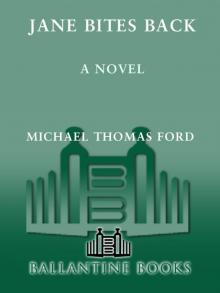 Jane Bites Back
Jane Bites Back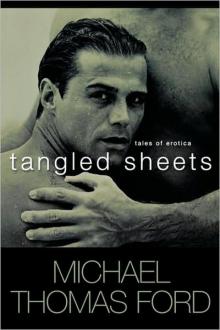 Tangled Sheets
Tangled Sheets Z
Z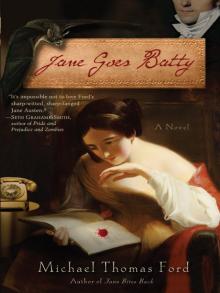 Jane Goes Batty
Jane Goes Batty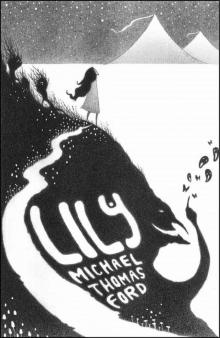 Lily
Lily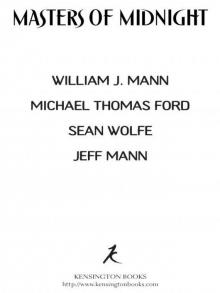 Masters of Midnight: Erotic Tales of the Vampire
Masters of Midnight: Erotic Tales of the Vampire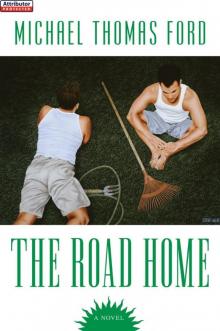 The Road Home
The Road Home Midnight Thirsts: Erotic Tales of the Vampire
Midnight Thirsts: Erotic Tales of the Vampire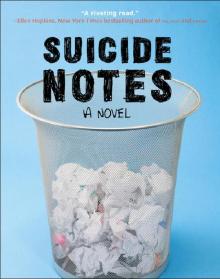 Suicide Notes
Suicide Notes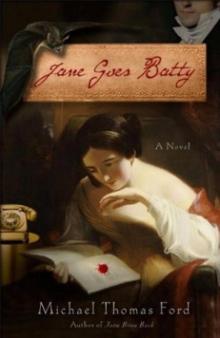 Jane Goes Batty jb-2
Jane Goes Batty jb-2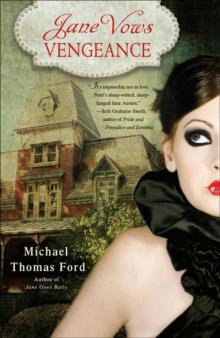 Jane Vows Vengeance jb-3
Jane Vows Vengeance jb-3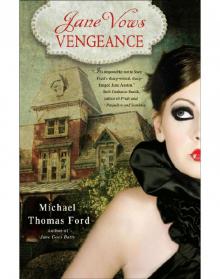 Jane Fairfax 3 - Jane Vows Vengeance
Jane Fairfax 3 - Jane Vows Vengeance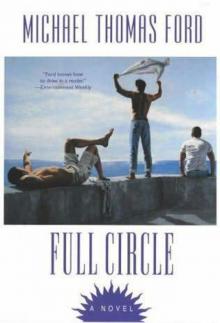 Michael Thomas Ford - Full Circle
Michael Thomas Ford - Full Circle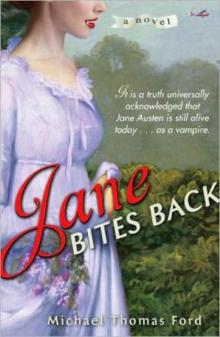 Jane Bites Back jb-1
Jane Bites Back jb-1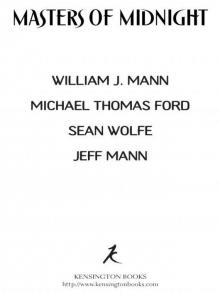 Masters of Midnight
Masters of Midnight